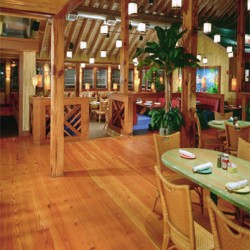Flooring Topcoat Finish
You are at the end of your floor installation process. You have built layer upon layer, possibly starting as far down as the joists and subfloor, upward through the underlayment, finish flooring, and stain. Now you are at the final layer: the flooring topcoat finish. What to do now?
Glossy vs. Semi-Gloss Topcoats
Your floor’s topcoat finish is all about looks and practicality. Many homeowners desire a highly glossy topcoat finish on the basis of its durability, but forget that these glossy finishes tend to show scratches quicker and are more slippery when wet.
Taking it down a notch, the semi-gloss and low-gloss topcoat finishes tend to be the best of both worlds: they have a moderate amount of gloss, yet they are still quite hardy and durable.
Oil-Modified Urethane Finishes

You will probably find that oil modified urethanes are much easier to fix than any kind of moisture cured urethane or acid-curing Swedish finishes. These moisture cured finishes are highly toxic and are difficult to deal with.
Every type of floor topcoat has its ups and downs. Waxes and oil finishes sound good on paper, but they are highly flammable and provide only a moderate amount of durability. Swedish finishes are toxic and have an overpowering odor, yet are considered extremely durable.
Moisture-Cured Urethane Finishes
If you live in a place with a lot of humidity, any moisture-cured urethane is just the ticket. These urethanes dry rather quickly in high humidity, yet these urethanes are also flammable and have a strong odor.
The oil modified urethanes are very smelly and dry slowly, but they are very resistant to abrasion and scratches. And finally, one of the most popular topcoat finishes, the water-based urethanes, have almost no odor, are very durable, and are not flammable.